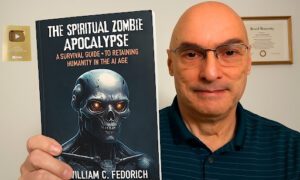“What if I told you your podcast could be working 24/7 to bring you new listeners—even while you sleep?”
Most podcasters spend hours perfecting audio, inviting great guests, editing meticulously—but then hit “publish” and hope for the best. Here’s the truth: even the most engaging podcast can drown in the noise without proper SEO.
Think about it: you wouldn’t publish a blog without keywords, right? So why treat your podcast differently?
Whether you’re just starting out or already pushing episodes weekly, this step-by-step guide will help make your audio content discoverable. From optimizing titles to turning one episode into 10 traffic drivers, let’s dive into podcast SEO mastery.
“Wait, podcasts need SEO too?”
Yes! Podcasts don’t live in an SEO vacuum.
While search engines can’t “listen” like humans (yet), they do crawl associated metadata—titles, descriptions, transcripts, webpages, and more. So if you’re not optimizing those, you’re missing out on thousands of potential listeners.
Here are the 3 major pillars of podcast discoverability:
- Podcast Platform Presence – iTunes, Spotify, and others rely on metadata and engagement signals.
- Website Integration – Google needs a crawlable place to index your content.
- Cross-Platform Content Strategy – Your podcast doesn’t live on an island. SEO works across blogs, social posts, even YouTube videos.
Step 1: Optimize Your Podcast’s Home Base
If your show’s main hub isn’t clear and searchable, listeners won’t find it.
Title Smart, Not Cute
Your podcast title should balance clarity, branding, and keyword intent. A clever title like “The Noise” may sound cool but tells neither Google nor potential listeners what it’s about. Instead, “The Noise: Marketing Strategies for Founders” hits both style and SEO.
Descriptions That Do Double Duty
The show description is where search engines pull key info. Make sure to:
- Naturally integrate 1–2 focus keywords
- Describe your show in the first 160 characters (what Google typically displays)
- Address the listener’s “what’s in it for me?”
Pro Tip: Write for humans, then layer in keywords. Think, “If a coworking space app user stumbled upon this—would it hook them?”
Choose the Right Categories & Tags
Don’t just guess—research your competitors’ podcast categories. Niche categories with high relevance help you rank faster. Use tags that match user search behavior but avoid stuffing them in unnaturally.
Step 2: Episode-Level SEO Magic
This is where your podcast content truly becomes searchable.
Title Formula: Topic + Value + Curiosity
Instead of “Interview with Jane Smith”, go for “How Jane Smith Grew Her Email List to 100K in 6 Months”. See the difference? It’s keyword-rich and compelling.
Show Notes That Rank
Think of show notes as mini blog posts. They should include:
- A summary with strategic keywords
- Guest name(s) and topic highlights
- Resources, links, and timestamps
- A CTA (subscribe, review, share)
Don’t Skip the Transcript
Google can’t “hear” audio—but it can index a transcript. Use tools like Descript or Otter.ai to generate and clean up transcripts for every episode.
Real Example: One podcaster increased traffic by 70% in 30 days by simply adding transcripts to older episodes.
Step 3: Beyond the Podcast Platform
Your website isn’t just a portfolio—it’s your podcast SEO headquarters.
Create SEO-Ready Episode Pages
Each episode should have a dedicated, crawlable webpage. Include:
- Optimized title tags and meta descriptions
- Transcripts and show notes
- Embedded audio player (for on-page listening)
Internal Linking = SEO Glue
Link between related episodes, blog posts, or resource pages. This helps both SEO and user experience.
Blog Post Spin-Offs
Have a hot episode topic? Repurpose it into a full blog post. Better yet—use it to support a broader content strategy around related keywords.
Step 4: Content Multiplication Strategy
One episode can feed your entire content calendar.
Quote Cards, Reels & More
Turn juicy soundbites into quote graphics, short video content clips, or even carousels. Add them to your omnichannel marketing strategy across social platforms.
Create FAQ Pages
If listeners ask recurring questions, create searchable FAQ pages that link to episodes. These rank surprisingly well on Google.
Build Topic Clusters
Group episodes by theme—e.g., “Brand Building Series” or “Founder Finance 101.” This not only helps SEO but builds brand loyalty by making binge listening easier.
Step 5: Technical SEO for Podcasters
You don’t need to be a tech wizard, but you should cover the basics.
Add Structured Data
Use Podcast Schema Markup to help Google identify your content. This increases visibility in rich results.
Improve Page Load Speed
Large audio players and images can slow down your website. Compress assets, and use lazy-loading when possible—especially for mobile.
Think Mobile-First
Most podcast listeners discover shows from phones. Make sure your site is responsive and easy to navigate.
Optimize Your RSS Feed
Ensure your feed includes accurate titles, descriptions, and episode metadata. Many podcasters overlook this, but it’s what platforms like Apple Podcasts rely on.
Measuring Success & What’s Next
You can’t improve what you don’t track.
Key Metrics to Watch
- Website traffic to episode pages
- Keyword rankings
- Backlinks and referral traffic
- Subscriber growth rate
- Listener retention and episode downloads
Tools That Help
- Google Search Console – See what keywords are driving impressions
- Podpage or WordPress plugins – Build SEO-friendly episode pages easily
- Chartable or Podtrac – Podcast-specific analytics
Common Mistakes
- Ignoring show notes
- Using generic episode titles
- Not building backlinks to podcast pages
- Not integrating episodes into a broader content strategy
Final Thoughts: Your Voice Deserves to Be Heard
Your podcast isn’t just audio—it’s a searchable, scalable content asset. When you treat it with the same SEO care as your blog or YouTube videos, it works overtime for you.
So start today. Pick one episode. Optimize its page. Write better show notes. Add a transcript.
Then do it again next week.
Podcast SEO isn’t magic—it’s method. And now, you’ve got the playbook.

































